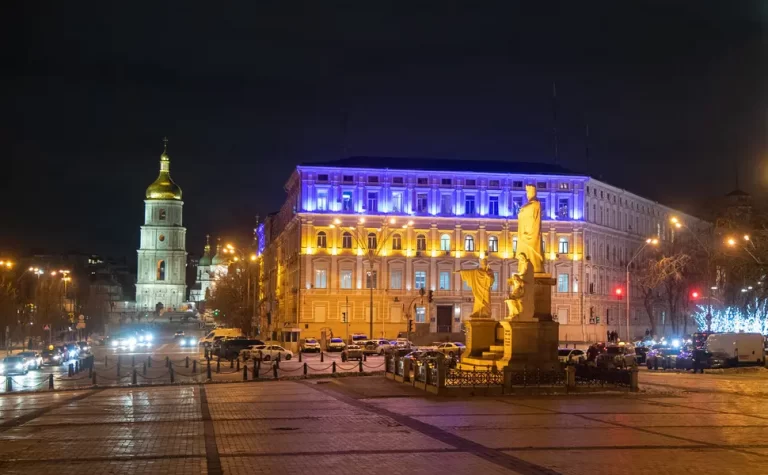
President Biden, was ultra-careful not to prod the Russian bear into a World War Three.
By Tom Arms
America this week crossed its Ukrainian Rubicon.
It took a while. And with good reason. US foreign policy was badly burned by operations in Afghanistan and the Middle East. It could not afford another expensive failure.
That’s not to say that the Biden Administration failed to support Ukraine’s fight against the Russian invasion. It froze the oligarchs’ assets, imposed sanctions, dispatched 100,000 US troops to Europe and provided $14 billion in military and humanitarian aid.
But at the same time, President Biden, was ultra-careful not to prod the Russian bear into a World War Three. There were to be no NATO boots on Ukrainian soil and a close watch was kept on any weapons provided to the Ukrainian military.
NATO forces will still keep out of Ukraine, but the flow and type of weapons is being substantially upgraded. On Thursday the president announced that he wants Congressional approval for a further $33 billion for Ukraine. $20 billion in the form of military aid; $8.5 billion in economic aid and $3 billion in humanitarian aid. A pro-Ukraine Congress will almost certainly approve the package.
The president also wants to liquidate the $1 billion-plus in oligarchs’ frozen assets to help offset the cost of the Ukraine war. This may not be much in comparison to the global total, but if Europe follows suit they will add an estimated $30 billion to the pot.
Biden’s announcement followed a trip to Kyiv by Secretary of State Antony Blinken and Defence Secretary Lloyd Austin, which in turn was followed by a meeting at America’s Ramstein Air Base in Germany of more than 40 countries who pledged to support Ukraine. The usually soft-spoken low profile Lloyd Austin was loud in his condemnation of Vladimir Putin and his support for Volodomyr Zelensky.
“We will not allow Putin to win,” said Austin, and it was clear from his comments and those of Antony Blinken that in supporting Ukraine the US believed it was backing good against evil and was on the right side of history. “Russia,” said the American Defence Secretary, “is waging a war of choice to indulge the ambitions of one man. Ukraine is fighting a war of necessity to defend its democracy, its sovereignty and its citizens.”
Blinken added: “Russia has already failed. Ukraine has already succeeded.”
America’s shift to a full-throated and committed support can be directly attributed to two causes: The united EU and NATO response to the Russian invasion and Ukraine’s staunch defence of its territory, especially the latter.
It is important to America to be not only on the side of the angels but to be on the side that wins. And it looks as if Ukraine is winning and will continue to do so. So far the UN estimates that 21,900 Russian troops have died in Putin’s war. One year’s production of aircraft—150—has been shot down and two years’ production of tanks—500—has been destroyed. It is estimated that the Russian artillery have used 70 percent of their entire inventory of short, medium and long-range missiles.
The Russian shift to the south and east has resulted in some gains for Moscow, but not as much as Putin hoped and the Ukrainians are ensuring that each gain is a costly one in lives and equipment.
Moscow’s ability to replace losses has also been seriously hampered by sanctions. The IMF has predicted that the Russian economy will shrink by at least 12.5 percent this year. On top of that, a large part of Russian defence systems include Western parts which manufacturers are now banned from exporting.
The danger now is that Putin will conclude that he cannot afford to lose and will resort to nuclear weapons to prevent that outcome. After Biden’s announcement of increased support, Russian Foreign Minister Sergei Lavrov called a press conference to condemn US and NATO “aggression” and added: “There is now a considerable risk of nuclear war.”

- Elon Musk is a brilliant entrepreneur and the world’s richest man. He also has a gargantuan ego, mercurial personality and thinks big. Tesla was developed to create a carbon-free planet. Space X is designed to give humanity a Martian bolthole in case we fail on Earth. His takeover of Twitter is, in his words, the result of a “strong intuitive sense that having a public platform that is maximally trusted and broadly inclusive is extremely important for the future of civilization.” Musk is a free speech absolutist. He is opposed to Twitter’s banning of Donald Trump but would be likely to countenance suspension. This brings the mercurial Musk into conflict with most of the EU governments, Britain and India. They have either introduced or are planning legislation to force social media to police their sites to prevent hate speech, conspiracy theories and outright lies such as Trump’s claim that he won the 2020 presidential election. How this will resolve itself will be watched very carefully by all the other social media players because, based on past performance, Musk is not the sort of person to quietly accept government interference.
- With the French presidential elections and the war of Ukraine grabbing the headlines you might have missed an important election result in the Balkan state of Slovenia. It was billed as a “referendum on democracy” and democracy won. On one side of the political ring was incumbent Prime Minister Janez Jansa. He is a Trump-loving ally of Hungary’s right-wing populist leader Viktor Orban. According to Freedom House his latest two-year tenure (he had been elected PM twice before), has been marked by Slovenia suffering the sharpest decline in Democratic institutions and values of any country in Eastern Europe and Central Asia. Jansa repeatedly attacked the judiciary and the media whom he called “liars” and “presstitutes”. Facing Jansa was 55-year-old former Fulbright scholar Robert Golob. He is businessman who created the state-owned energy company GEN-1 and has limited political experience as a city councilor and former State Secretary at the Ministry of Economics. In January he created the Freedom Party to contest the April elections. The result was a resounding victory. The Freedom Party won 34.5 percent of the vote compared to 23.6 percent for Jansa’s Slovenian Democratic Party. The turnout was also encouraging. 71 percent of Slovenia’s 1.7m voters cast their ballots compared to 51 percent in elections two years ago. The increase in voter turnout has been attributed to Golob persuading young people to vote—a possible lesson for other politicians seeking to remove far right populists from elected office.
- The voters of Northern Ireland are facing one of their most important elections in the history of the troubled province on 5 May. It is expected that the Irish Nationalist Party Sinn Fein, which for years was the political wing of the IRA, is expected to win control of Stormont, Northern Ireland’s National Assembly. In the last elections in the Republic of Ireland, Sinn Fein won the largest share of the popular vote. Thus, both the British province and the Republic seem to be moving inexorably towards a referendum and political union. Or are they? Sinn Fein are pointedly refusing to talk about Irish unity. They need votes from disgruntled Protestants who normally vote en masse for the Democratic Unionist Party (DUP). So they avoid frightening them with talk of union by concentrating on the bread and butter issues of health, education and the cost of living crisis. Any reporters’ questions about taking up the First Minister’s job or Irish unity are politely brushed aside. “Political union,” said Deputy Sinn Fein leader Michelle O’Neill,”is an issue for the future. I want to deliver on the things that matter for the here and now.” The strategy is expected to work. If it does the future may very quickly become the here and now.
- Guns have overtaken cars as the number one cause of traumatic deaths among American children. According to a 10-year survey led by New York’s Dr Joshua Klein, firearms overtook the automobile in 2017 and have been speeding ahead ever since. In 2018, for instance, there 83,000 more American children killed by guns then car crashes. And, according to Dr Klein’s study, the number of child deaths from guns is increasing at a steady rate of about 0.72 percent a year. Of course, children are not the only ones to die as a result of an almost total absence of gun control in America. According to the latest figures from the Brady Campaign to Prevent Gun Violence, 111 people a day are shot in the US. 42 are murder victims and 65 commit suicide. A total of 210 survive gunshot wounds. Last year 117, 345 Americans died as a result of being shot—or shooting themselves—with a gun. The latest survey is published as the Supreme Court is pondering its latest judgment on gun control. This one involves a New York regulation restricting the carrying of concealed handguns. With conservatives holding a two-seat majority, it is possible that the court will rule against New York and in favor of the pro-gun lobby led by the National Rifle Association. The ruling will have a major impact on gun control cases now in the lower courts who tend to side with those in favor of gun control.
_______________
 Tom Arms is foreign editor of Liberal Democrat Voice and author of the recently published “America Made in Britain.”
Tom Arms is foreign editor of Liberal Democrat Voice and author of the recently published “America Made in Britain.”